HOME | ABOUT US | MEDIA KIT | CONTACT US | INQUIRE
HOME | ABOUT US | MEDIA KIT | CONTACT US | INQUIRE
PUBLISHED AUGUST 2025
 Todd Ahrens Hannibal Regional Health System, Hannibal
Todd Ahrens Hannibal Regional Health System, Hannibal
Young Todd Ahrens contemplated life as a physician before physics classes prompted a career reappraisal. That’s how this son of a Hannibal lawyer himself became a Hannibal lawyer. With a touch of irony, though, Ahrens is indeed working in health care—as the CEO of Hannibal Regional Health System. It covers northeast Missouri and west-central Illinois, a magnet for acute care with 99 licensed beds at its main medical center and more than 5,000 patient admissions a year in a town of under 17,000. After law school at the University of Missouri, he came home to the same firm his father had worked for. “I still reflect on that as one of the good decisions I made on my professional path,” Ahrens says. That path would lead him to health-care administration, first as a board member for the system, then its legal counsel, then CEO in 2012. With more than $823 million in annual revenues, it’s among the biggest enterprises in Hannibal. Giving up his law practice wasn’t easy, but Ahrens saw a greater good to be served. Helming a rural hospital, has always been a challenge, but the latest hurdle was passage of the federal spending bill in July, with its changes in Medicaid spending and eligibility. “I don’t know where our savior is from a legislative perspective…but we must make sure we continue to tell our story at the state and federal levels about impacts we’ll see not just in money, but taking care of patients to help remedy those issues.”
 Ashley Albers Nor-Am Cold Storage, St. Joseph
Ashley Albers Nor-Am Cold Storage, St. Joseph
Call it fate, call it coincidence, call it luck: Whatever the process, life and career produced a win-win-win for Ashley Albers, Nor-Am and St. Joseph when her parents’ company acquired a cold-storage facility in Missouri in 2009. Leveraging her University of Iowa communications-degree skills, her success in managing a California retail mall for Simon Property Group, and her training as an executive there, she has helped the company’s growth to more than 600 employees in seven states. “It only took one visit for us to fall in love with St. Joseph, the history, the architecture, the outdoor spaces, it felt like home,” she says. She started with a mall job before the Nor-Am deal closed, then made the move to HR director there as she and her husband began raising their family. “Over the last decade, the HR function has evolved from the person in charge of onboarding paperwork and handbook sign-offs to a strategic partner,” she says. “That communications degree is coming in handy as we negotiate group benefit plans and oversee talent acquisition and retention, compensation planning, learning and development, and creating a workplace culture that we call family focused.” The company, she says, is “one link in the food supply chain that is highly dependent on a strong transportation infrastructure, but location is everything.”
 Aaron Baker Axiom Strategies, Atlanta
Aaron Baker Axiom Strategies, Atlanta
Aaron Baker lives in two worlds: one where he’s an executive for a national political consultancy and communications firm, and one in north-central Missouri, carrying on a family farming tradition that goes back more than 180 years. He divides time between Axiom Strategies and the 1,500-acre farm he operates with his brother and sister in Macon County. “Understanding the farm economy gives me a perspective most political consultants don’t have,” in his work with rural candidates, he says. He entered that field after earning a degree in ag economics at Mizzou, then worked in the state Senate and for U.S. Rep. Sam Graves. At Axiom, he leads crisis communications—“often for candidates or corporations that are in a pickle,” he says—and advises more than 100 Missouri candidates each election cycle, along with those in federal races, statewide campaigns, and ballot initiatives. “Agriculture isn’t just an industry in Missouri—it’s a way of life,” Baker says. “And yes, I’m still the one in my circle filling out the Farm Bureau surveys.” Technology has allowed his consultancy career to blossom even from a town of 385 people, making the journey to the mother ship in Kansas City once a month. “That flexibility,” he says, “means I can serve as school board president, lead a 4-H club, and still manage a busy career.”
 Denny Benne Benne Media
Denny Benne Benne Media
From the western approaches to the Lake of the Ozarks all the way to Rolla and south to Bolivar, Denny Benne has central Missouri’s radio needs blanketed across both the AM and FM frequencies. The Missouri Broadcasters Association counts 11 Benne Media stations (eight FM, three AM) in his empire, cranking out hits in formats appealing to a wide range of musical tastes: Country, hot adult contemporary, classic rock and oldies, along with news programming. He’s not a back-office numbers-cruncher in radio ownership; Benne came into the field by working the business end of a broadcast microphone. While still he was study-ing broadcast journalism back at the University of Missouri-St. Louis in the early 1980s, he snagged an internship and started working the most challenging of radio shifts—the midnight to 6 a.m. slot, then went on to buy the company just over 25 years ago. His company’s outlets have been recognized in the MBAs annual awards with multiple first-place honors for best on-air talent among small-market stations.
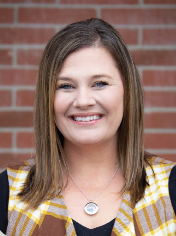 Heather Brown Lake of the Ozarks CVB
Heather Brown Lake of the Ozarks CVB
Those with jobs that inspire them, fuel their passions, serve their communities and set foundations for family and faith should be able to relate to Heather Brown. All of that, and more, is woven through her life as director of the Lake of the Ozarks Convention & Visitors Bureau. A native of Eldon to the northeast, she’s married to a native of Camdenton, from the southern end, and after college, she says, “I knew we wanted to build our future here. … There was never a doubt—this is the place we wanted to raise our family, surrounded by the community and the beauty of the Lake area.” Tourism, she says, has always been her passion, so stepping into that role with the CVB felt like coming home—which it was; she’d worked at the bureau years ago before returning. “This job is truly a blessing—I get to share the joy of the Lake and help create experiences that bring families together,” Brown says. “One of the most rewarding parts is hearing stories from families who have been coming here for generations. The Lake has become a home away from home for so many, and knowing that I play a small part in preserving those cherished memories is what keeps me going.” What makes her job easier than most of her peers have is the region’s “magical” appeal. “Home to the state’s largest park and a sprawling 54,000-acre lake, the outdoor activities here are truly unmatched,” she says.
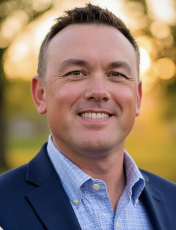 Brad Burns Burns Holdings, St. Louis
Brad Burns Burns Holdings, St. Louis
Raised just outside the St. Louis suburban fringe, Brad Burns came back to the city after college at Mizzou because he saw opportunity. And did he ever seize it: After a few years in commercial construction and real estate, he launched a construction company of his own (Wayne Contracting), then Vizek Branding (a graphics-installation company), followed by City Seafood to supply regional restaurants, Meramec Pools, Meramec Hardscapes (residential specialty concrete) and most recently, Arch City Group, opening and operating area quick-service restaurants. “I always knew I wanted to do something for myself, but just wasn’t sure what that was to start,” he says. Once he was started, though, there were no limitations. “All of our current companies came from seeing an opportunity, a gap in the market, or someone who undervalued their skills and built an opportunity from the ground up around that,” Burns says. Success in that dynamic, he says, starts with finding great people who “are way better at a specific part of the business than I could ever be, but the most critical thing is to have a relatively rigid process in place so that your workflow is continuous.” It also helps, he says, to set anchor in a city brimming with people who want to see others succeed and are willing to pitch in. Now, Burns says, “I am at a point in my career where I look to reciprocate the generosity that I have received from the community around me.”
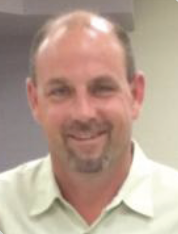 Jeff Carroll Above & Beyond Roofing
Jeff Carroll Above & Beyond Roofing
A college degree, a solid work ethic and a bit of entrepreneurial derring-do have all played a part in the story of Jeff Carroll, who became a laker when the family moved from his native Kirksville back in 1982. After securing a degree in business administration and finance from Lincoln University, he made the calculation that would keep him closer to home: “I worked in the restaurant and bar industry, and was making close to $45,000 bartending, and it was hard to earn anything close to that with any type of college degree,” Carroll says. From there, he began managing multiple hospitality venues before taking the leap himself with the founding of the Osage Beach sports bar Pickled Pete’s in 2000. Then came The Great Recession, and by 2011, it was time to move on. He eventually landed at Above and Beyond Roofing nine years ago. It was an opportunity to thrive at a company that defied the stereotypes—one with integrity. “We don’t door-knock or chase storms; most of our work is word-of-mouth referrals,” he says. A diverse portfolio of residential, commercial and repair work is one key to success, but the growth in the region—especially post-pandemic—has been huge. “I hate to say it, but COVID actually helped us out,” Carroll says. “We’ve had 5-6 million tourists a year as long as I can remember; that more than doubled under COVID.”
 Ashley Casad CoxHealth, Springfield
Ashley Casad CoxHealth, Springfield
The only problem with being a health-care attorney, Ashley Casad realized in college, was the attorney part. For this West Plains native, working at a law firm while earning her history degree at the University of Arkansas was “not quite what I’d pictured. I still wanted to work within the health-care sector, so I started exploring different options, both on the clinical side as well as the support side.” Thus began a journey that would eventually lead her to Cox Health in January 2020—an interesting time, just as the word “pandemic” was entering the national lexicon. “In many ways, I walked into a very different job than what I was hired to do,” says Casad. Thrust into service as deputy incident commander of the systemwide response, she oversaw pre-procedural COVID testing and was responsible for vaccination clinics for our employees and the community. “Both of these items took significant time, and neither of them did I ever expect to be doing when I said “yes” to joining CoxHealth,” she says. But her performance earned her promotion to president of Cox’s Springfield sites in early 2023, overseeing more than 33,000 hospital admissions a year, with $6 billion in revenues. “I believe the pandemic made our organization more innovative and more nimble,” she says. “I think it created a confidence in the team, too, that we could handle really challenging problems. I think it changed me in many ways, much like it changed the system.”
 Mark Clark First Choice Marine, Mark’s Charters
Mark Clark First Choice Marine, Mark’s Charters
Here are two defining elements in Mark Clark’s life: Fire and water. A retired battalion chief with the Central Jackson County Fire Protection District—where he served for more than 35 years—he’s spent the bulk of his life in the Kansas City suburb of Blue Springs. But the Lake of the Ozarks region has long been a part of that life. He co-founded First Choice Marine more than 20 years ago as an online platform selling boat parts and other products for outdoor enthusiasts. That worked well enough to justify a brick-and-mortar presence, keeping him grounded—literally—until he can get away to the lake. First Choice offers a full suite of products for boat owners, from propulsion to engine maintenance, trailering, lighting, plumbing, covers and more. Clark is a lifelong and avid boater, and when he’s on the water, it’s not always a matter of recreation: He holds a U.S. Coast Guard captain’s license for craft up to 100 tons. His entrepreneurial itch is further scratched with Mark’s Charters, which he formed last year as a side gig. There, he puts his deep knowledge of the lake’s twists, turns, coves and eddies to work, either on his or rented vessels or for owners on their own boats, and offers a brand of private boat piloting instruction “for new boat owners in a laid back relaxed manor that allows you to learn at your own speed,” he says.
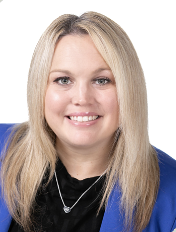 Kara Corches Missouri Chamber of Commerce & Industry, Jefferson City
Kara Corches Missouri Chamber of Commerce & Industry, Jefferson City
It’s not a title common to business cards, but Kara Corches has claimed it as her own: Chief Bragger for the state of Missouri. As CEO for the chamber, she represents more than 75,000 member businesses statewide. “We often talk about Missouri being well-positioned to attract businesses from high-cost states, like coastal states,” says this native Californian, who says she was the “trailing spouse” after her husband took a job here. “I had always worked in national and state advocacy roles and was fortunate enough to land the position as the director of legislative affairs—aka, lobbyist—at the Missouri Chamber.” She became vice president of governmental affairs in 2021 before the board chose her as its first female leader in November. “One key thing that I have appreciated most about life in Missouri is the people,” she says. “Those that always roll up their sleeves to get the job done, help out a friend or neighbor, or genuinely ask you how your family is doing—and they do indeed really want to know.” Her job allows her, she says, “to tell the story of Missouri’s amazing business community to elected officials. And trust me, Missouri’s employers have amazing stories to tell.” A major focus of her work is addressing “the No. 1 pain point of employers,” work-force availability. Another: the lack of child care that keeps “a significant number of Missourians out of the work force.”
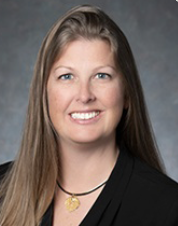 Sarah Dubbert Commerce Bank, Columbia
Sarah Dubbert Commerce Bank, Columbia
Sarah Dubbert’s degree in secondary education from the University of Missouri focused on mathematics, but just three years after leaving Mizzou, her work with numbers took her in a different direction: banking. After five years with UMB Bank in Columbia, where she was a vice president of retail sales, Dubbert signed on with Commerce Bank in 2008 and began her ascent up the leadership ranks. A certified treasury professional, she started in treasury services for the state’s second-largest bank, which has total assets of more than $32 billion. In 2022, she became president of the Columbia market and oversees its advisory board and community engagement efforts. She’s also the commercial banking division manager for Commerce’s Central Region. Her duties include assisting commercial and small business customers, drawing on a background that includes retail sales, private banking, client servicing, specializing in corporate borrowing, real estate, and cash management for large corporate clients, and companies in health care, insurance, public-sector entities, and non-profits. As a good corporate citizen, she has compiled a strong resume of service as a volunteer or board member working on behalf of the American Legion Auxiliary, the Columbia Chamber of Commerce, the Community Foundation of Central Missouri, Ronald McDonald House Charities of Mid-Missouri, and Girls on the Run.
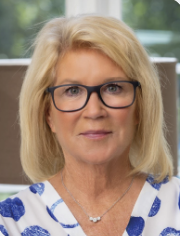 Susan Ellis Re/Max Lake of the Ozarks
Susan Ellis Re/Max Lake of the Ozarks
She’s owned a Midtown Manhattan co-op, a New Jersey beach house and a place near Florida’s Palm Beach. So Susan Ellis wouldn’t be an easy convert to Ozark lake life. But her husband Ben “un-retired” to become Missouri’s parks director in 2017, and it made sense, after testing long-distance marriage, for her to relocate. That’s how this one-time EY executive-turned-real-estate agent added Missouri to a long list of places where she’s lived. Now, she’s thriving in home sales in the state’s playground. “I knew nothing about the area, knew no one and no one knew me and there was a ton of very successful agents here already—so where to begin, how do I create this?” she says. “My approach to real estate is different—more like consulting, and my business and accounting background really helps me help my clients. Let’s face it, no one needs a second home, they just want one if the numbers make sense and/or it’s their dream.” Personally, though, “I love living at the lake, the people are what makes this community so fantastic,” Ellis says, “They are special, friendly, down to earth and it’s so fun to see my clients achieve their dreams, whether it’s buying or selling. I really enjoy helping others.” Ameren’s ownership of the lake means people can build by the shore and have their own dock, unlike state lakes, she says. “Plus all the recreation on the lake in terms of activities—it’s really a unique area.”
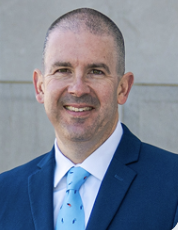 Stephen Foutes Missouri Division of Tourism, Jefferson City
Stephen Foutes Missouri Division of Tourism, Jefferson City
More than 42 million people visit Missouri every year; Stephen Foutes’ job is to keep ’em coming back, and add to the count. Since 2020, he’s been the tip of the spear for the state’s tourism efforts. Fittingly, he was born in a popular tourism destination—Mark Twain’s hometown of Hannibal—and he was raised in Bowling Green. After starting his career as a newspaper reporter and editor, he worked in the tourism office for 8½ years, left for an association role, then came back to lead the office. As a lifelong Missourian who loves this state, joining the Division of Tourism offered a new perspective on the people and places that make Missouri great, he says: “It’s an honor to have a job where the ultimate goal is to promote Missouri and lead others to enjoy the awesome travel experiences that are waiting here.” He has some useful tools in his kit, including new attractions to supplement time-honored draws like vacation-destination lakes and resorts, museums and theaters in the big cities, musical shows in Branson, the Arch in St. Louis, and the rustic splendor of the Ozarks. Key among them are world-class golf courses coming on-line, especially near Table Rock Lake. “We’re also very fortunate that, amid rising costs for everything, including travel, Missouri’s destinations and attractions remain affordable,” he says. His own favorite draw? Borrowing a line from one of his predecessors, he slyly says, “the next one I visit.”
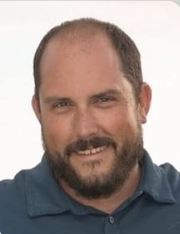 Garrett Gibson Willow Ridge Asphalt & Trucking
Garrett Gibson Willow Ridge Asphalt & Trucking
Love brought Versailles native Garrett Gibson to Camdenton—his wife is from the area—but his was a match made on more than one level of heaven. Not only is the Lake Region a great place to raise a family, “it’s the perfect place to grow my company,” says the founder of Willow Ridge. That is the dichotomy of the region: It’s increasingly more cosmopolitan with new types of products and services available, but it’s not letting go of its character. “The recent growth in our area has allowed my business to flourish,” Gibson says. There are so many new construction projects happening that need asphalt services as well as established businesses that are growing and able to make upgrades. A fresh asphalt parking lot or driveway is some of the best curb appeal you can get.” After college, he took a gig delivering concrete precast products throughout the lake area, and Camdenton became home in 2011. So he’s actually been a part of the growth move there. “I can’t speak for all the long-time residents, of course, but as a long-timer myself, I believe most of us are excited about the growth. Overall, it’s still the lake area, just with more places to dine, a little more traffic, and a lot more opportunities,” he says. He founded Willow Ridge Trucking in 2021 and then added the asphalt division a year later. “We work all over the lake area and absolutely love what we do,” he says, in both commercial and residential venues.
 John Goodbrake Master’s Transportation, Kansas City
John Goodbrake Master’s Transportation, Kansas City
Everyone knows the real-estate maxim about location. But it’s something to keep in mind if, say, you want to deliver school buses, vans, motor coaches or luxury shuttles coast to coast. The key? Start in the middle. That’s worked well for Master’s Transportation, the Kansas City-based company experiencing explosive growth as it opens new locations from the Pacific to Orlando. Under owner John Goodbrake, who moved company from its Nebraska roots to Kansas City in 2000, the strategy has paid off with four-fold growth in revenues over the past decade, topping $238 million last year. “Kansas City is a great central location,” Goodbrake says. “That helps us service customers from coast to coast.” And with the first phase of a $72 million expansion now open, look for more of the same. “We were able to consolidate five locations in south KC into a large facility giving us both unity and operational efficiency,” he says. “This also gave us a place to grow, and produce significantly more vehicles.” He points to the leadership team there as a prime success factor. “We have been together for a long time, and have been able to navigate a significant number of issues over the years,” Goodbrake says. “There is no overnight success in this company, but there is a resilient energy, and positive, can-do attitude.” He also cites a culture that embraces “Moving People Forward”—both internally for employees, and externally for customers—as a foundational value.
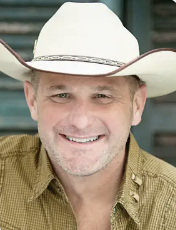 Kenny Ray Horton Musician
Kenny Ray Horton Musician
If you’ve heard the country-themed “Missouri,” adopted by state tourism officials for their promotional efforts, you either appreciate music with a high level of energy—or you don’t have a pulse. Written by Joplin-area native Kenny Ray Horton and first recorded while he was lead singer for the U.S. Navy Band Country Current, it’s a tune that sells everything about the state, from Kansas City barbecue to the Arch in St. Louis to the grandeur of the Ozarks. (If you haven’t heard it, you can readily access it on YouTube, a 2013 video in which his fellow sailors bring the heat). Horton was raised on gospel, country, and bluegrass, and the influences show. He ventured to Nashville as a songwriter, and made a mark when the late Kenny Rogers tabbed his “A Soldier’s King” for a Christmas album. “I have been an entertainer all of my life,” Horton says. “That includes experience as a voice-over artist for TV ads as well as a demo singer in Nashville for some of the best songwriters I’ve ever listened to.” Following his retirement from the Navy, his performing experiences led him to explore entertainment-related services like lighting design, stage set-up, road and stage management, artist management and advertising. He continues to tour, so you can occasionally catch him on stage in his home Show-Me state. Looking forward, he says, “I hope to find many entertaining opportunities for one-man acoustic, and full band shows for people looking for contemporary country, southern rock and bluegrass.”
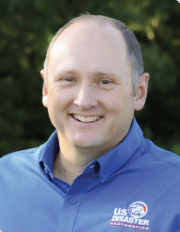 Samuel Hubbs U.S. Disaster Restoration / AWI
Samuel Hubbs U.S. Disaster Restoration / AWI
You can call it the Lake Value Proposition, but you probably have to have lived somewhere else to fully appreciate it the way Sam Hubbs does. He grew up in the Shawnee National Forest region of southern Illinois, and began to see that value prop come into sharp relief after having set up his construction-services business, specializing in building repairs from water, fire or storm damage, mold removal and other tasks. “No doubt, I made more money in Memphis; however, I did not wish to raise my kids in the city, nor anywhere close,” he says. “The lake provided the opportunity to grow a business and raise a family out of the influence of the larger towns and on the farm.” He earned his degree in architecture from Southern Illinois University, and settled on Osage Beach after a stint in Arkansas. “I was looking for a place that I could start a business in the construction industry without all the big-town living and between family, as I have family in Arkansas and Southern Illinois,” he says. “I have a background in architecture that let me into construction, from there I branched into restoration.” He also launched A Wooden Idea, inspired by the woodworking shop where his great-uncle had him doing various tasks as a boy. Operating in a niche construction space, Hubbs has made a home in a region that he says has “a wide demographic of people with lots of opportunities and growth, still with more of a small-town feel.”
 Kyle Kelly Kelly’s Port
Kyle Kelly Kelly’s Port
Purveyors of good times run in the Kelly family—the late patriarch Randal established Kelly’s Westport Inn—but Kyle Kelly is serving up an entirely different experience. Along with his brother and business partner Ryan, they operate Kelly’s Port marina and boat dealership, founded by their father Randy Kelly in 1977. So Kyle grew up around the water, headed off to Saint Louis University for college, then tested life’s waters in St. Louis, Chicago and even Italy. But lake magic was too much to resist. “We’ve got some-thing very, very unique,” he says. “There was just no reason not to come back.” He’s not alone: A lot of people have made their home in the region—and not just second/vacation homes—and Kelly has seen a consistent parade of inbound moving vans. “The lake was already on a serious growth trajectory starting in the mid-1990s,” he says, but COVID policies “dumped gasoline on the growth. So we’re not only seeing more people coming to the lake for recreation, we’re getting more full-time residents. “It’s fantastic they’ve come down here,” he says, “and that they’ve found the same majesty of the lake that I discovered, and that my mom (Realtor Jane Kelly) and dad discovered 50 years ago.”
 Ronald Kruszewski Stifel Financial, St. Louis
Ronald Kruszewski Stifel Financial, St. Louis
Hard work and resilience. Both, says Ron Kruszewski, were foundational elements of life growing up in Crumstown, Ind. “My dad worked multiple jobs; he was a barber, a firefighter, and ran a lawn-mowing business. My mom was a devout Catholic who stayed home to raise my siblings and me. Most of the people I knew went into trades or factory work, but I wanted something different.” And he found it, as the first in his family to go to college, paying his way through Indiana University by mowing lawns and working as a bouncer. He studied accounting and finance at IU, became a CPA and audit supervisor for KPMG, and learned how companies operate from the inside out. His career veered into investment banking before he joined Stifel as CEO in 1997. “At the time, Stifel was a small regional brokerage, but I saw potential,” he says. Since then, it has grown from $100 million in revenue to $5 billion, and with a market cap that went from $40 million to more than $11 billion. “I still believe deeply in Stifel’s relevance and our ability to effectively serve clients across wealth management, banking, institutional advice, and capital markets,” Kruszewski says. Anchored in St. Louis, he sees a business community that benefits greatly from a highly experienced and deep work force, particularly in financial services. “Many may not realize that back in the 1960s, St. Louis ranked right behind New York in financial services,” he notes.
 Ken Lawler LOZ App
Ken Lawler LOZ App
His business interests often keep him tied up in St. Louis, but Ken Lawler is all about the Lake Life. So much so, in fact, that he’s been able to incorporate it into his work. His Tapptechnology custom- builds mobile apps for all sorts of industries, and he’s the man behind LOZ App, a lake-focused platform that keeps vacationers, tourists and year-round lake residents up to date on … well, just about everything. Restaurants? Find ‘em here. Same with marinas, concerts and shows, shopping updates (check out the coupons) and if you’re planning on a very extended stay, job opportunities. Out on the water, you can find the closest place to refuel, or a place to pull up for Happy Hour. “Did I know it was going to consume me for the next year? No,” he said, sitting for an interview with Lake TV. “But it has really resonated with a lot of people here at the lake, and it was needed.” It’s a variation on the theme of Lawler’s Westlife app, which does much of the same for residents of the St. Louis suburbs and the St. Charles area, creating a model he could extend to markets in Chicago and Kansas City. At Tapptechnology, his team moves nimbly to help clients get their mobile apps to market, including tech focused on real estate, live events, financial services, hotels, radio stations and general business.
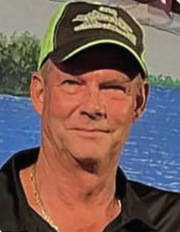 Mark Maasen Poly Lift Boat Lifts
Mark Maasen Poly Lift Boat Lifts
If you could put a human face on the Lake of the Ozarks, it would probably look a lot like Mark Maasen’s. Yes, it’s significant that he’s president of the Lake of the Ozarks Marine Dealers Association, and yes, he has an important role as president of the Lake of the Ozarks Shootout, the world’s largest non-sanctioned boat race and a vital fund-raiser for local charities. But the lake has a deeper meaning for Maasen, who co-owns Poly Lift Boat Lifts with his brother, Mike, carrying on the business legacy started by their father. “He started in 1975, and I remember when I was six or seven putting nuts and bolts together to make it easier for dad to assemble lifts,” Maasen recalls. “And Mike was just three, but even he did what he could then.” Mark absorbed the business right away, and was himself assembling lifts for boat owners before he was in high school—an occasional point of consternation for some who couldn’t believe someone so young could execute such a task. The brothers acquired the company after their father’s death in 2009, have since doubled it, and Maasen continues his lifelong relationship with the lake. In fact, until the past couple of years, he and his wife, Tiffany, competed in the Shootout themselves—they have the best-in-class trophies to show for their racing skill. “It’s important for us to support the Shootout, poker runs and other fun runs,” he says, “because they all raise money for great things here at the lake.”
 Ryan Manselle Osage National Golf Resort
Ryan Manselle Osage National Golf Resort
The late, great Arnold Palmer designed 18 holes at Osage National, and oversight of that legacy today is entrusted to Ryan Manselle, general manager of the facility just east of Bagnell Dam at the Lake of the Ozarks. His dominion includes 27 holes overall, but the main attraction is the state’s only Arnold Palmer Signature Course, with its 18 zoysia fairways and bentgrass greens sprawling across roughly 7,150 yards of river bottom land. One of the more popular venues in a vacation and tourism mecca packed with courses, Osage National consistently draws user reviews of four stars and up across most on-line sites that gather player feedback, with the vast majority citing the natural beauty of the course, its layout, and the “extras” that include a massive 20,000-square-foot clubhouse, 24-hour fitness center, pro shop, restaurant and helpfulness of the staff, plus on-site accommodations. In addition to a driving range and two large practice putting greens, the course itself also offers air-conditioned restrooms. With PGA course ratings of 74.7 and a slope rating of 141, Osage National is right up there with some of the most challenging courses available to amateur golfers anywhere in the country, exceeding even the member-level tee rankings at the fabled Augusta National in Georgia, home of the Masters.
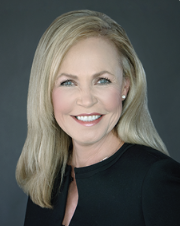 Dana Martin Martin & Birdsong
Dana Martin Martin & Birdsong
If you sell boats, skis, light beer or coolers in the heart of the state’s tourism capital, you have to gird for competitive battle. Lawyers? Far more of them are probably on the water than in the county courthouse, but here’s one on the case for lake-region clients: Dana Martin, a partner at Martin & Birdsong in Lake Ozark. She’s a native of Seneca in far southwest Missouri, and she earned a law degree at the University of Arkansas following her bachelor’s in environmental sciences from Mizzou. The path to law school wasn’t initially planned, she says, but once she got into it, “I found my calling.” She began practicing criminal defense in 1998, then made the lake her home in 2002. “The small-town atmosphere in the off-season and the influx of new people during the season were major attractions,” Martin says. It hasn’t always been easy; the potential client base nearly 25 years ago wasn’t nearly what it is today. “Early in my private practice, specializing was a challenge due to the smaller population,” Martin says. “However, with the significant increase in the lake’s population, this is no longer an issue. My firm now also offers estate planning and probate services, and I remain involved in my family’s assisted-living facility in Neosho, Mo., which opened in 2017.”
 Leah Martin Lake of the Ozarks Marine Dealers Assn / Shootout
Leah Martin Lake of the Ozarks Marine Dealers Assn / Shootout
How vibrant is the boat and watercraft market at Missouri’s signature vacation spot? Vibrant enough to support more than 40 marine dealers selling boats and accessories, docks, personal watercraft and more. Competitive as a group, they are also collaborative through the Lake of the Ozarks Marine Dealers Association, and running point on that effort is Leah Martin as executive director. She came to the association in late 2023 after 23 years in the non-profit sector—the American Cancer Society and American Lung Association were previous career stops—and as executive director of the Lake of the Ozarks Shootout, the world’s largest unsanctioned boat race, and a huge driver of philanthropy in the Lake Region, drawing an estimated 100,000 spectators for two days of high-speed racing on the lake. “While the Shootout and the association are different organizations,” she said when she was named association director, “the missions align to promote the marine industry and grow tourism at the Lake.” The dealers collectively become a magnet for both novice boaters looking to take the next step up, and for the high rollers with the big cabin cruisers. The association connects consumers with one-stop shopping opportunities to check out the latest in watercraft models. In addition to marine dealers, it has nearly four dozen marine-related enterprises.
 Nathan Maurer PB Realty, Poplar Bluff
Nathan Maurer PB Realty, Poplar Bluff
In the thriving Poplar Bluff area—Butler County’s GDP is up nearly 6.5 percent since 2020—Nathan Maurer is doing his part to drive the thrive. He wasted no time out of high school, discovering a knack for connecting with people in one of the sales world’s toughest venues: door-to-door vacuum sales. “I thought that was easy money, which was pretty good at that age,” Maurer recalls. Not long after, a friend suggested he leverage that skill in real estate, “so I started buying houses (and building them), saved money, then started buying a bunch more.” Result? A portfolio that today includes apartments, rental homes, hotels, farmland and commercial properties in multiple states. One key to his success has been keeping a level head during the Great Recession. “Even in ‘07-’08, we did well, because we had great relationships with lenders and appraisers, and were able to buy a lot of short sales,” he says. “That was huge.” Ramping up by acquiring properties—as many as 10-14 a week—he was able to build a solid foundation as appreciation brought those units closer to their pre-crash valuations. These days, the only concerns he has about the region’s vibrancy are the same ones the rest of the nation’s housing market is experiencing: Homeowners sitting on mortgages issued at 3 percent, reluctant to sell if it means buying again at 6-7 percent. Still, he says, there’s more ground yet to plow in the region’s real-estate field.
 Michael McComb Blue KC, Kansas City
Michael McComb Blue KC, Kansas City
Michael McComb was the one who got away from his hometown university in Rolla, for one simple reason: “I didn’t want to go into engineering,” he says. He opted for general business studies at Evangel University in Springfield, and then set course for a career in the health insurance sector, thanks to an unusually non-specific classified ad that had just one job qualification: a year’s worth of computer experience. Well, he has a lot more qualifications today. McComb moved into the Kansas City market 17 years ago, and then came on board at Blue KC in 2020, where he’s now vice president of operations for the region’s largest health insurer. “I’d always felt like I wanted to do something with health-care, but didn’t expect to do it on the payer side of things,” he says. “But it turned out I was pretty good at it.” As an operations guru, he had his hands full almost immediately, helping many in a staff of more than 1,000 at the time pivot to remote work with the pandemic’s onset. “Blue was very much an in-person organization at the time,” McComb says. “I brought a very global mindset from my prior employer, a global company, and was able to quickly shift operations to remote because I’d done it for years, quickly getting teams up to speed and teaching them how to navigate” He now heads a team of roughly 170, with oversight for claims, membership, enrollment, system configuration and various Blue Cross programs.
 Brandy McCombs IBC Inc., Kansas City
Brandy McCombs IBC Inc., Kansas City
With 2024 revenues approaching $28 million, IBC continues to assert its presence in the world of women-owned construction services companies under the steady hand of founder Brandy McCombs. But she isn’t just building infrastructure—she’s rebuilding expectations. In a milestone for both Kansas City and the broader construction industry, McCombs was the first woman to chair the board of The Builders, a local chapter of the Associated General Contractors of America, before those two local entities merged. For the founder of IBC, a traffic-management and construction services firm, the moment is deeply personal. “I’ve supported this organization for years,” she says. “To now lead it shows we’re finally evolving—recognizing women can lead from the top.” An Ohio native, McCombs entered construction in Florida before the 2008 recession forced a pivot. She saw opportunity in the Midwest and zeroed in on Kansas City—a region that, unlike many, held steady during the economic downturn. “It felt like home,” she recalls. “Friendly, familiar, and full of opportunity.” McCombs acknowledges the industry’s lingering “good old boys” culture but believes Kansas City’s entrepreneurial ecosystem sets it apart. “Here, collaboration is currency,” she says. “You see names like Hallmark, Helzberg, and Russell Stover—and behind them are stories of grit, community, and relentless entrepreneurship,” she says.
 Dan Meers Kansas City Chiefs, Kansas City
Dan Meers Kansas City Chiefs, Kansas City
After 35 years of zany antics, Dan Meers has hung up the fur: The long-time KC Wolf mascot for the Kansas City Chiefs recently wrapped up nearly four decades of suiting up to entertain fans, celebrate birthdays and anniversaries, enliven corporate events—and even walk a few brides down the aisle. It all started at Mizzou when he read about tryouts for the Truman the Tiger mascot. “I got the job, and spent four years running around in a tiger suit,” he recalls. The St. Charles native leveraged that into a gig as Fredbird, the St. Louis Cardinals’ mascot, and impressed enough people to warrant a phone call from Arrowhead Stadium. The Chiefs’ marketing efforts required him to suit up roughly 300 times a year for various civic, charity and private events. Keeping the act fresh for so long occasionally entailed some risks, none bigger than in 2013, when practice for a stunt ziplining and bungee-jumping above the stadium nearly killed him. “I spent nine days in the hospital,” he recalls. “Broke seven ribs, collapsed a lung, shattered my tailbone, separated a shoulder, and pulled more muscles than I can tell you—even broke two seats out of the concrete.” Now, recovered and retired, what are his Sunday plans this fall? “For the first time in 35 years, I can go to see a Chiefs game at Arrowhead and watch the game without fur over my face,” he says. “I’m looking forward to that.”
 Adam Mistler Dam Steel & Supply
Adam Mistler Dam Steel & Supply
A booming region like the Lake of the Ozarks doesn’t boom without the raw materials of construction, and that’s where Adam Mistler comes in at Dam Steel & Supply in Osage Beach. For more than four decades, since its founding by his father, Jeff, the company has provided welding services, steel fabrication and installation and supply all types of steel, including decorative uses. Across that same timeline, Dam Steel’s products have transformed the region itself, particularly with their use in the explosive growth of commercial buildings, but also with residential uses and infrastructure related to activity on the lake, including new marinas, boat slips and docks. The company currently is owned by Mistler and his brother, Alex, who also oversee sister company CWD Supply (for Concrete Welding & Dock), which was formed in 1996. It provides concrete tools, welding supplies other waterfront materials central to dock maintenance and construction of new slips. With a team of expert welders and fabricators, Mistler is able to provide customers with products that are both artistic and functional, including statues, three-dimensional sports team logos and signage, spiral staircases and more.
 Renita Mollman Burns & McDonnell, Kansas City
Renita Mollman Burns & McDonnell, Kansas City
Credit the high school math teacher back in South Dakota who saw something special in a student. For Renita Mollman, that guidance was the first step to an engineering degree at South Dakota School of Mines & Technology. And it paved her way to Burns & McDonnell, where, over the past four decades, she has risen to become the chief administrative officer. She’s had a front-row seat as the company has exploded in employee numbers, revenues and service lines on its way to becoming the Kansas City area’s largest engineering and construction firm. She enrolled in college to pursue math studies, “but it turned out I didn’t know what I would do with a math degree, so I went into civil engineering, and I guess it stuck.” It began with a surveying course, using tools nothing like those employed by modern engineers, and she found a passion for that field. “I always kind of liked to think about building things like that.” It being the 1980s, she didn’t have many female peers in that study field, “probably 10 or 12 percent of the engineering students were female. … Still, it was a wonderful experience.” She found meaning in a career that was more about service than climbing a corporate ladder. “I really loved working with clients to help solve problems,” Mollman says. Meanwhile, her innate leadership abilities attracted support from colleagues, and “I realized I was not bad at this people thing,” she says, and she began her leadership ascent.
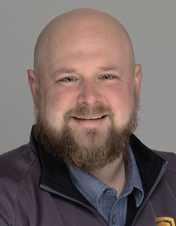 Chad Nugent Thomas Construction
Chad Nugent Thomas Construction
Chad Nugent builds things for a living, but don’t silo him as a contractor; instead, think of him as an artist, working on a very challenging canvas in the Lake Region and well beyond. “Residential around the Lake of the Ozarks is so unique; we get to take tough topography and design a home to fit the landscape,” he says. “At times I feel it’s an art form to use the land to create the layout while meeting all the needs and desires of the client.” A native of the area born at Lake Regional in 1984, he’s spent all but five years of his life there; a relocation to California ended with an epiphany: “We quickly realized the Lake of the Ozarks was our home,” Nugent says. His multi-state travels while rising through the ranks at Thomas Construction reaffirmed that. “I always knew I would want to raise my family here,” he says. “This area has always been home for me as it has all the outdoor activities I love including boating, hunting, and fishing. The laid-back lake life and the good people that call this place home has always been why I call this home.” An affinity for construction, he says, started at home and was “just something we did. I fell in love with working with my hands at an early age my dad trained me in all trades of construction.” A construction science/tech degree from Missouri State ushered him back into the field, and now, Nugent says, “I am blessed to lead multiple teams to construct buildings all over the Midwest Region.”
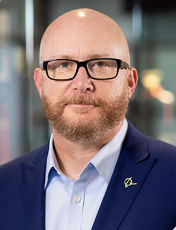 Steve Parker Boeing Defense, Space & Security, St. Louis
Steve Parker Boeing Defense, Space & Security, St. Louis
One of the St. Louis region’s biggest employers is also a vital cog in the nation’s defense posture: Boeing’s Defense, Space and Security Division, which produces fighter jets, trainer aircraft and unmanned aerial refueling systems. Just last month, the company turned to a 37-year-veteran, Stephen Parker, to drop the “interim” from his title and assume command of the division as CEO, overseeing a highly trained, highly skilled and highly specialized work force of more than 15,000. In that role, he oversees all aspects of the company’s business unit that provides technology, products and solutions for defense, government, space and intelligence customers worldwide. The top rung on his Boeing career ladder came after serving as chief operating officer for the St. Louis site, responsible for day-to-day business operations such as quality control, manufacturing and safety processes, and supply-chain management. Company officials say his history there has included development of the most innovative products and solutions across the defense portfolio. He previously led the company division responsible for fighters like the EA-18G Growler, the F/A-18E/F Hornet , F-15E/EX Eagle, F-22 Raptor and the T-7A training system. He also had a hand in strategic bombers with work on the B-1, the venerable B-52 and, in collaboration with Northrop Grumman, the B-2.
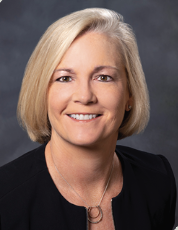 Julie Quirin Saint Luke’s Health System, Kansas City
Julie Quirin Saint Luke’s Health System, Kansas City
Julie Quirin took on a new job—sort of—last year, and didn’t even have to change offices. As the CEO of Saint Luke’s Health System in Kansas City, she became part of a statewide health-care organization serving 6.25 million Missourians after the merger into BJC Health of Saint Louis. She retained oversight of her operations, which became BJC’s West Region when the union was finalized in early 2024. She joined Saint Luke’s more than 25 years ago, after earning a degree in business and corporate communications from Buena Vista University and a master’s in organizational communication from KU. In her rise through the leadership ranks, she never lost sight of what was most important. “We’re all care-givers,” she says. “That means while not all of us are patient-facing, it takes all of us to create the culture and environment for our patient-facing providers to be their best.” The merger, Quirin says, “was more about the opportunities ahead and a vision for the future of care than just responding to the market conditions of the moment.” For Quirin, it yields advantages of scale without sacrificing the ability to tailor a go-to-market strategy. “We have the benefits of efficiency and of being able to react more quickly to disruptions with concentrations of expertise and talent on both sides of the state, and we are still just as locked in on the needs of our home market as we’ve always been,” she said.
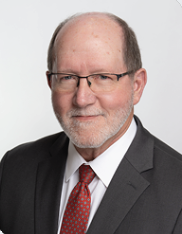 Clayton Rogers Heritage Bank of the Ozarks
Clayton Rogers Heritage Bank of the Ozarks
The pundit who coined the phrase “You can take the boy out of the country, but you can’t take the country out of the boy” must surely have had Clayton Rogers in mind. As community president for Heritage Bank of the Ozarks in Camdenton for the past 11 years, Rogers is exactly where he wants to be, working for a locally owned community bank in a small-town setting. After graduating from Cabool High School in 1978 and heading off to Drury College, Rogers never expected banking would become his career. What started as a PT teller position during college evolved into a career of 43 years. After working for Boatmen’s Bank in Springfield, Mo., Rogers moved to Camdenton in 1990 to accept a position with First National Bank. He left there in 2013 and, with the help of five co-workers, opened a branch in Camdenton for Heritage Bank of the Ozarks. Rogers fell in love with banking from the moment he started. He attributes the relationships created with customers and staff over the years to making his career choice so enjoyable and rewarding. Being able to help people achieve their dreams and goals is very satisfying. A volunteer board member for Medical Missions for Christ Health Clinic, Kiwanis Club, Central Ozark Development and the city’s parks department, he’s lived there for 34 years, and his work has allowed him to live the bank’s slogan of Neighbors Serving Neighbors.
 Kent Scott Ameren Missouri, Portland
Kent Scott Ameren Missouri, Portland
Literal fact: A meeting of all the chief nuclear officers at electric-generating stations in Missouri could be held on a unicycle. Or, more comfortably, in the office of Kent Scott with Ameren Missouri, since his is the only such facility in the state. He is responsible for all of Ameren Missouri’s nuclear operations, which includes the Callaway Nuclear Generating Station near tiny Portland, about an hour northeast of Jefferson City in Callaway County. That nearly 2,800-acre site has been humming since late 1984, cranking out nearly 1,200 megawatts of power for nearly 1.2 million Ameren customers. When he came on board in 2023, it was almost a homecoming, of sorts: he earned his bachelor’s degree in electrical engineering from the University of Missouri-Rolla before securing his MBA at Illinois State University. Scott worked his way up the leadership ranks from reactor operator at Clinton Power Station in central Illinois. Before joining Ameren Missouri, he was site vice president at Entergy’s River Bend Station in Louisiana and site director at Xcel Energy’s Monticello Station northwest of Minnesota’s Twin Cities, and before that, held various managerial positions with DTE Energy’s Fermi 2 in Michigan. The Callaway plant originally opened with a 40-year operating license, which was extended in 2015 by federal regulators, and now is expected to be in service through 2044.
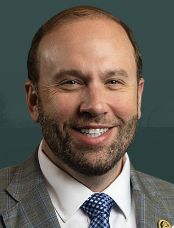 Rep. Jason Smith U.S. House of Representatives, Salem
Rep. Jason Smith U.S. House of Representatives, Salem
Before the much-debated One Big Beautiful Bill could clear Congress and be signed into law by President Trump on July 4, it had to pass what you might call the Show-Me Test: the tax provisions within it bore the fingerprints of Rep. Jason Smith, who represents the 8th Congressional District that sprawls across southeast Missouri. Smith is chairman of the Ways and Means Committee—the oldest committee in Congress, and the one with oversight of the bill’s tax provisions. He’s the youngest member to chair that committee since before the Civil War, and the first Missourian in that role since John Phelps, the namesake of Smith’s neighboring county. So his workday is intertwined with tax policy, all U.S. trade and tariffs, Social Security, Medicare, and scads of welfare programs. Steering the measure through a sharply divided Capitol, the task had personal aspects. “This bill,” he said, “is also for rural communities like my hometown of Salem, where the factories that I would drive by as a young kid are now shuttered and the good-paying jobs they provided were shipped overseas. I cannot overstate just how significant and positive an impact this bill will have on farmers, workers, small businesses, and families across southeast and south-central Missouri.” A seventh-generation Missourian and fourth-generation farmer, he came to Congress in 2013 after eight years in the state General Assembly.
 Michael Spyres Ozarks Lyric Opera, Springfield
Michael Spyres Ozarks Lyric Opera, Springfield
Two things will strike you immediately if you see the remarkable viral video of Michael Spyres blitzing through a three-octave note: First, awe that anyone can do that. Second, that you could find a world-class tenor in the Ozarks. “I have had a few videos of mine go viral,” says the director of Ozarks Lyric Opera. But for sheer hit-count, with millions of views, “is of me singing the famous Figaro aria entitled Largo al factotum.” He’s received tens of thousands of comments in dozens of languages around the world. “It has been,” he says, “quite surreal to cross over from the world of opera into pop culture.” Raised in Mansfield, Mo., by two music educators, he says, “My siblings and I grew up performing at every event in our town, whether that was funerals, weddings, or parties. We were the Hillbilly Von Trapps, and my mother would write plays and musicals for us to perform.” With his opera debut at age 17, “I became fascinated with the art form. I went to college for just 2½ years to study opera and musical theatre, but opera became an obsession, and after traveling to Europe at 19 with my choir, I realized that it was possible to be an opera singer as a profession.” Family and the artistic community keep him anchored in Springfield, despite travel most of the year. “I spend as much time as I can giving back and sharing the future landscape of the arts that helped me when I was starting out.” “I love telling people about the Ozarks, and they are surprised that we have a world-class opera company, two orchestras, a Broadway-level musical theatre scene, and dozens of comedy and theater troupes.”
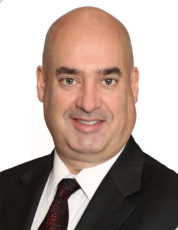 Greg Steffens Southern Bank, Poplar Bluff
Greg Steffens Southern Bank, Poplar Bluff
In financial-services centers of excellence, you’re not likely to hear Poplar Bluff, Mo., a city of just 16,000, mentioned with the likes of New York or Boston. But just 22 miles north of the Arkansas border sits a Show-Me State banking powerhouse: Southern Bank. It’s the ninth-largest bank in Missouri, with nearly $5 billion in assets. In the driver’s seat at Southern sits Chairman Greg Steffens. He’s been with Southern since taking the role of chief financial officer in 1998, and needed just a year to get his bearings before becoming president and CEO in 1999. From there, things took off: the bank’s assets have increased 30-fold since he started there, and from a modest 59 employees then, it has become a bedrock of employment in southern Missouri, with 722 on staff. All told, Steffens has more than 30 years of banking experience, primarily in leadership roles. He came to Southern after the acquisition of Mount Vernon-based Sho-Me Financial Corp. His career began at the Office of Thrift Supervision after he’d earned his degree in business administration/accounting and finance from what is now the University of Central Missouri in Warrensburg. On his watch, Southern has not been content to limit its role to community banking. In 2023, the corporate footprint expanded into the highly competitive Kansas City market with the acquisition of Citizens Bank & Trust.
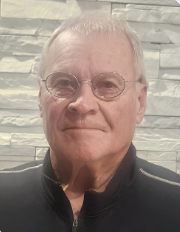 David Stone Stone Construction & Renovation
David Stone Stone Construction & Renovation
Somewhere out there is a birth certificate that designated him as David Stone, but you’ll draw a blank stare from anyone in the Lake Region if you call him anything other than Stoney. “Most people don’t even know my real name,” he says. “I once had a boss who was going to clean up my act, said I was a project manager and call me Dave. That lasted about two days. I’m Stoney, and I’ve been a carpenter for 50 years. That’s it.” A native of tiny Chaffee, south of Cape Girardeau, he started his career in St. Louis, right after high school, working on hotel, casino and retail projects. “There wasn’t much other work in Chaffee unless you were a farmer or worked the railroad,” he says. In 2004, he came to the Lake Region—“I’d always wanted to live here,” he says— building condos. Lots of condos. A few good years followed, leading up to the Great Recession, then came a rebound before another, bigger boom: The pandemic-era flight out of the cities, which lit the growth fuse around the lake. A big item on his current dance card is deck replacement for buildings that went up decades ago, projects valued at up to $1 million, where everything must be torn out and completely rebuilt. He counts himself fortunate to have two members of his small crew with multiple years of service because the lake labor market remains tough. “That’s what’s missing at the lake: personnel,” Stoney says. “You just can’t find the young ones who want to do this kind of work.”
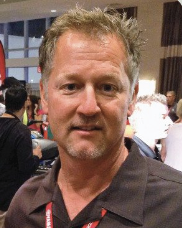 Greg Surdyke Surdyke Yamaha
Greg Surdyke Surdyke Yamaha
Greg Surdyke came to the Lake Region nearly 30 years ago to chase a dream: He wanted to own a successful business with his wife and kids. And so it was. Perhaps the lake’s elbow room was part of the lure for this native of Hematite, a small burg south of St. Louis. But a dozen of the 457 residents were under the Surdyke roof. “I spent most of my youth sharing a home and bucket of fried chicken with nine other siblings,” he recalls. His dad owned a Yamaha and Harley-Davidson shop, and Greg applied lessons learned there to his own lakeside enterprise. It is all about boats, Waverunners, motorcycles, off-road four-wheelers, power products and more, plus service and repair. “I got hooked on lake life immediately,” Surdyke says. “I hunt, ride motorcycles, boat, fish, surf, and love good food. The Lake can’t be beat by any other place in the world for my lifestyle.” The lake unites Missourians of any stripe, whether those stripe are Cardinal red (St. Louis) or Royal blue (Kansas City). And that perspective, Surdyke says, carries over into business: “I personally think that locals and tourists should be treated the same, he muses. “My dad always told me that “‘if they’re breathing, then they are a good customer. … Treating customers like family and reciprocating the same from them makes it worth the while. I am also so lucky to have a job that is so stinking fun to be a part of that the hard work is also well worth the effort.”
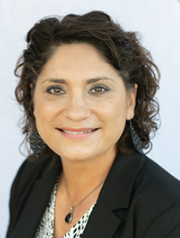 April Tate Oak Star Bank
April Tate Oak Star Bank
April Tate is able to look through two lenses to appreciate what the Lake Region is today, and how far it’s come during her working life. First, she’s a lifer: “Born and raised at the Lake of the Ozarks,” she declares. Second, over two decades in local banking, over which she has seen the region transformed for the better. “The Lake of the Ozarks area experienced remarkable growth, evolving from small towns with a single stoplight to thriving communities with shopping centers, top-rated schools and expanded hospital services,” she says. “It’s become a very attractive area to visit and live in.” She’s been with Springfield-based Oak Star going on 24 years, currently as senior VP and director of banking relationships supporting locations in Camdenton, Lake Ozark, Osage Beach, and Sunrise Beach. Her mission: Supporting the retail team, and serving business relationships. “I truly love the ability to give back to the community I live in, she says. We do so with core values of meeting people and helping in whatever way I can,” Tate says. “Whether that be a transaction, a friendly ear, or jumping in to help out the situation.” Earlier in life, she’d envisioned becoming a history teacher, but when banking called, she was all ears. “I knew right away that this was the company where I wanted to build my career,” she says. “From Day One, I felt like part of the family.” And she’s right at home outside of banking, as well, golfing every chance she gets and relishing the region’s attributes. “The lake area has kept its small-town charm while adding big-town amenities.”
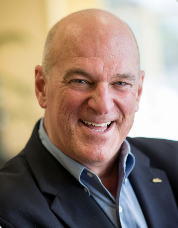 Brad Thomas Silver Dollar City Co., Branson
Brad Thomas Silver Dollar City Co., Branson
Raised in the Ozarks since age 9, Brad Thomas would visit Silver Dollar City growing up. The connection began then. After earning his MBA, he joined the company’s merchandise team in a training role, and “I knew then this was where I was supposed to be for at least a few chapters of life,” he says. Nearly 35 years later, the chapters are still being written. “From the day I started, I was mentored, encouraged and challenged. This place felt like home.…It still does.” Don’t let the corporate brand fool you: He oversees more than just the state’s premier theme park. The Herschend family’s ownership includes the Branson Belle theater showboat, and White Water, the water park. Keeping the act fresh at the park is a constant task. “Consumer attitudes, behaviors and expectations are constantly changing,” he says. “The same is true with the hopes, dreams and expectations of employees. The world we all knew 10 years ago is different than the world of today; and the world in our tomorrows will continue to change,” even if your main attraction has a theme frozen in the 1880s. So when change comes, “we change in a quest to constantly improve, and understand the changing expectations of our guests,” he says. Prime examples: sinking $30 million into a renovation of the Fire in the Hole ride, or tweaking the hugely popular Christmas event. “The work inside a theme park is really like the workings of a mini-city,” Thomas says.
 Mel Tjeerdsma Northwest Missouri State University, Maryville
Mel Tjeerdsma Northwest Missouri State University, Maryville
So you thought Mel Tjeerdsma was done after building the nation’s premier small-college football team? Think again: Yes, he did retire as head football coach at Northwest Missouri State University in 2010, after amassing a sterling 184-43 record, three NCAA Division II championships and 13 MIAA conference titles in 17 seasons. And yes, he did log another seven years as athletic director for the Bearcats. But done? Nope. He continues to serve the green and white as chairman of the University’s Board of Regents. Former Gov. Mike Parson appointed him to the board in 2019, the same year he was elected to the College Football Hall of Fame. Mel Tjeerdsma was born for this. “For whatever reason, I don’t know why, but from the time I was a little kid, all I ever wanted to do was something with athletics, and I really wanted to be a coach,” he told the National Football foundation after earning his Hall of Fame nod. “So I didn’t fall into it, it was something I dreamt of my whole life.” Tjeerdsma earned a degree in physical education from Southern State College and coached for a decade at Austin College in Texas. He did well there, with a 59-39-4 record, but that was no indication of what was to come. At Northwest, where he earned a master’s degree, he took a team that was 0-9 in conference his first year and worked miracles. He wrapped up his coaching years with five straight undefeated seasons and seven consecutive D-II championship appearances.
 Bob Tomaso Husch Blackwell, St. Louis
Bob Tomaso Husch Blackwell, St. Louis
Like father, like son? Not exactly in Bob Tomaso’s case. This native Bostonian, the son of a steelworkers’ union shop steward, took a white-collar path to a career—and ended up in labor and workplace law, where the interests didn’t entirely align with his family history. “While I was a student at the University of Virgina School of Law, my dad and I discussed the possibility that I would become an employment lawyer, and I had to warn him we would be sitting on different sides of the table.” Nonetheless, young Tomaso received his blessing to represent businesses, rather than employees. The first in his family to go to law school, Tomaso remembers having “no idea what lawyers really did,” as a youth, but “I always wanted to be a lawyer.” He headed into labor law because “reading legal cases about sexual harassment in the workplace just struck me as more interesting than writing wills or analyzing complicated real estate deeds. I don’t know why.” Everyone, Tomaso says, “can relate to employment law because we have all had some interesting workplace experience.” In addition to finding the subject matter interesting, and through absolute luck, the practice of employment law has continuously expanded since he started practicing in 1989. “Those of us who have been in this field for many years could never have imagined the sheer volume of work that has been created through legislation and court opinions,” he says.
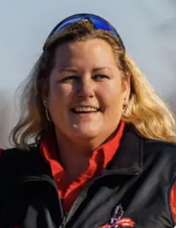 Amy Trout Warm Spring Ranch, Boonville
Amy Trout Warm Spring Ranch, Boonville
Not many people have jobs quite like the one Amy Trout has. Scratch that: No one has a job like Amy Trout has. Not in Boonville. Not in Missouri. Not on this planet. She’s tasked with overseeing Warm Springs Ranch, where Anheuser-Busch keeps, trains and breeds most of its stable of iconic Clydesdale horses. A native of Virginia who earned a degree in animal science and minored in zoology at North Dakota State University, she originally taught high-school agriculture classes. Then she decided that working with four-legged creatures had a better appeal. Having been raised on a farm working with draft horses, she found a perfect match with the Budweiser folks, who first made the horse team the brand’s mascot back in 1950. It started at the Grant’s Farm operation near St. Louis, the historic home of the brewery’s founding Busch family, before she headed west to Warm Springs in 2021. These days, Trout travels the country with teams of eight horses for promotional and marketing events like parades, and working with nearly two dozen full-time and part-time employees at the Cooper County site. They have their hands full there with the care and feeding—and breeding—of as many as 100 of the massive beasts at any one time.
 Michael VanBuskirk Newmark Zimmer, Kansas City
Michael VanBuskirk Newmark Zimmer, Kansas City
The numbers attest to Michael VanBuskirk’s impact: More than 1,200 real estate transactions. Combined value? North of $2.25 billion. Not a bad resume for more than 30 years in commercial realty for Newmark Zimmer, where he’s vice chairman. All told, he’s had his fingerprints on deals involving 30 million square feet of commercial properties and more than 3,500 acres of land. Among them: The 24-story 2555 Grand Boulevard Building at Crown Center—at the time the largest office building developed in town in decades. A Kansas City native, he found his passion early. “I was always interested in all aspects of commercial real estate, including specifically brokerage and development,” he says. With no degree-track programs in this region, he secured his master’s in Texas, and upon his return, helped establish the real estate program at the Bloch School at UMKC; he continues to serve on the advisory board for the Lewis White Real Estate Center there. Initially attracted to the firm by the iconic Hugh Zimmer, then son David, he says he’s now committed to creating similar opportunities for future leaders at the firm. “We are at an exciting time in Kansas City,” he says. “One of the major changes I have seen over the last 30 years is the amount of institutional and international capital investing in the Kansas City area today.”
 Breanna Vanstrom Missouri REALTORS, Columbia
Breanna Vanstrom Missouri REALTORS, Columbia
Nearly 4.7 million homes were sold in the U.S last year, and Breanna Vanstrom is committed to helping Missouri real-estate agents get their slice of that pie. She’s CEO of the state association that supports more than 25,000 sales agents in the field. Vanstrom is a Minnesota native who originally envisioned a career in advertising. But something else was tugging at her interests: Real estate. “Early on, I was lucky enough to find a job that blended the two—designing marketing materials for new home developments—which eventually led me to a position as a communications director” for a realty association. There, she says, “I got to see firsthand the incredible work our members were doing on behalf of their clients and their communities, and loved being able to support them” as they navigated complicated and diverse real estate transactions to help their clients, and build successful real-estate businesses of their own. That work, Vanstrom says, “has been a consistently rewarding part of my career.” She came to Missouri in 2022 after holding a similar position in Boise, Idaho. The desire by members agents, to be of service to the people with whom they live and work alongside, is second to none, Vanstrom says.
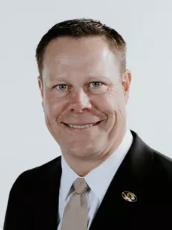 Laird Veatch University of Missouri, Columbia
Laird Veatch University of Missouri, Columbia
Laird Veatch saw the gritty side of college athletics—the bruises, the aches and the occasional bloodstains—as a linebacker at K-State in the 1990s. Then the hometown player saw another side when he got to know Max Urich, the Wildcat athletic director, during swings around the state to meet fans and promote a rising program. “He helped me see what administration does for student athletes,” Veatch remembers. “Most of the time, as a player, I didn’t have any idea what people were doing in the background. I decided I wanted to stay in athletics, but not as a coach—I wanted a balanced lifestyle and family.” That plan worked out, thanks to Brandy and their four children, who have stood by him through multiple moves to Texas, Mizzou, Iowa State, back to KSU, Florida, Memphis, and, last year, back to Columbia as Athletic Director. There, he’s tasked with building on a well-earned reputation as a successful fundraiser to drive program growth. That will be critical in MU’s continuing $250 million renovation of the football stadium. But he says he’s in a good place to do that. “First, you have to have passion and people who really care, combined, candidly, with capacity—the ability to invest at a high level,” Veatch says. “I always felt like there was a ton of upside opportunities at MU. It takes work, building trust, and a lot of it is timing. But it’s such a good moment right now.”
 Mary Kay Von Brendel Ozarks Amphitheater
Mary Kay Von Brendel Ozarks Amphitheater
The water is THE headline attraction at the Lake of the Ozarks, but some vital supporting acts make it unlike any other vacation mecca or magnet. That’s where Mary Kay Von Brendel comes in, checking a very big box on quality-of-life issues in mid-Missouri’s Lake Region. She’s the director of operations for Ozarks Amphitheater, where she’s spent more than a decade turning a once-failed enterprise into an entertainment gem. From Memorial Day weekend through the end of September, the venue is a refreshing change of pace after a day on the water. She’s already lined up a stellar list of acts for 2025, big names from diverse corners of the music and entertainment world—comedian Nate Bargatze, country singers Dwight Yoakam, Billy Currington and Trace Adkins, rock legends the Ozark Mountain Daredevils, Kansas and Earth, Wind & Fire, and for those with a taste for alternative rock/pop, the Goo Goo Dolls. Von Brendel came to the Ozarks in 2015, having honed her skills in event coordination with various stints in California, Wisconsin and Minnesota. Before getting into that line, her career path had covered various sales and support roles, along with non-profit work, and she’s a 2016 graduate of the Camden County Leadership Program. Her focus now is filling seats in a venue that seats 10,222, with overflow seating for several thousand more.
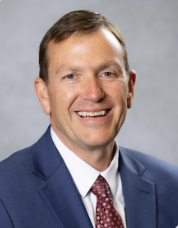 Biff Williams Missouri State University, Springfield
Biff Williams Missouri State University, Springfield
The chances that Biff Williams would end up in education were pretty darn high right from the get-go: A native of Brigham City, Utah, he was influenced by his father’s work as a teacher and school principal, and his stepmom was a teacher. Teaching, though, wasn’t part of the original plan: Williams had his sights set on becoming an athletic trainer. Weber State University didn’t offer that as part of a formal curriculum, so he followed up at Indiana State with a master’s in the field, and says “I loved that.” His first job was as trainer for El Paso High School, where he had to be a teacher to be on staff. With that, the door cracked open on a new career track. “I fell in love with teaching sports-medicine classes,” Williams says. “I knew I wanted a Ph.D and to teach at the college level.” He earned that credential at New Mexico State, and was positioned to pursue his passion, designing a curriculum, which he did at Northern Iowa and fell in love again with the administration aspects. Following a stop at Michigan State, he returned to Utah at Dixie State, now Utah Tech, where he helped create more than 200 curricular programs and—here it is again—“I fell in love with that process.” Up the ranks he rose until Missouri State came calling last year. Count on more program development there. “The way knowledge is changing,” he says, “I think every higher-ed institution needs to evaluate what it has, look where the work-force shortages are and find the gaps,” Williams says.